Chapter 23
Questions
- 441. A 45-year-old female was admitted to the hospital with complaints of acute onset of shortness of breath. This still frame shows:
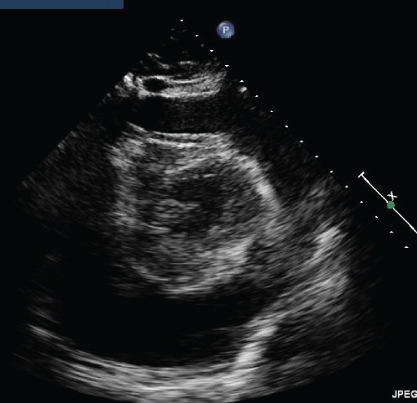
- A. Pleural effusion
- B. Pericardial effusion
- C. Normal heart
- 442. The M-mode from the above patient shows:
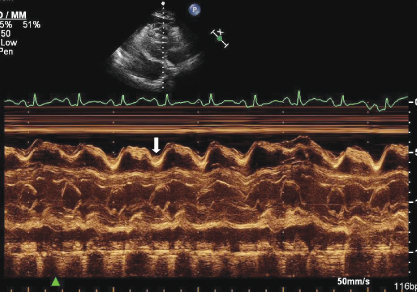
- A. Normal M-mode through the heart
- B. Diastolic collapse of the right ventricle
- C. Pericardial thickening
- 443. The Doppler across the aortic valve shows:
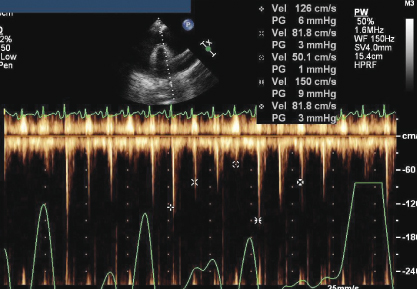
- A. Normal Doppler flow pattern
- B. Tamponade
- C. Restriction
- 444. The Doppler flow across the pulmonary valve is suggestive of:
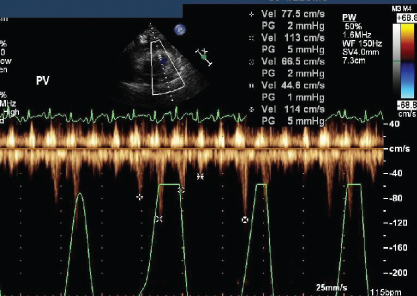
- A. Normal flow pattern
- B. Restriction
- C. Constriction
- D. Tamponade
- 445. The image of IVC from the above patient is suggestive of:
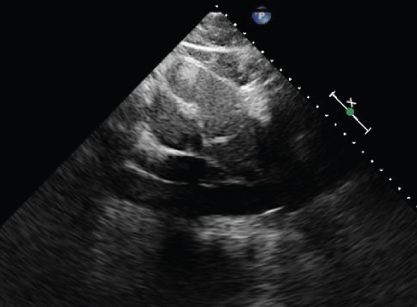
- A. Normal RA pressure
- B. Low RA pressure
- C. Elevated RA pressure
- 446. What does the image show?
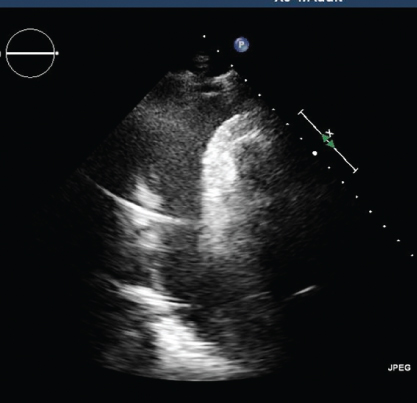
- A. Normal appearance of the LV
- B. Catheter in the pleural space
- C. Catheter in the pericardial space
- 447. Two days later, she complained of shortness of breath: the image shows
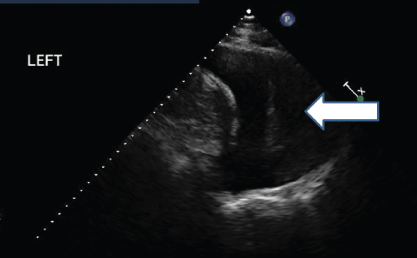
- A. Pericardial effusion
- B. Pleural effusion
- 448. The arrow points to:
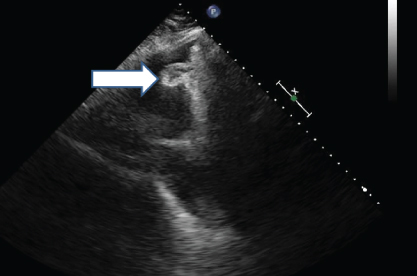
- A. Normal appearance of the myocardium
- B. Masses in the pericardial space
- C. Artifact
- 449. A 23-year-old female presents with complaints of sudden onset of severe shortness of breath. She gives remote history of skin rash. Her labs indicate a eosinophil count of 20%. The most likely diagnosis is:
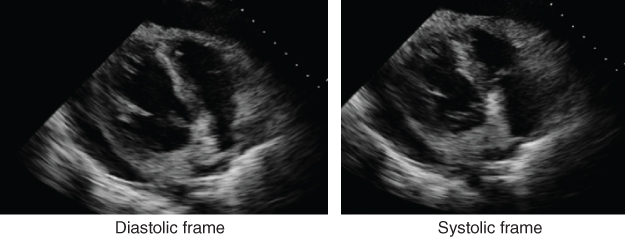
- A. Constrictive pericarditis
- B. Eosinophilic myocarditis
- C. Giant cell myocarditis
- 450. A 42-year-old male with a h/o Down’s syndrome was evaluated with an echocardiogram. The image shows:
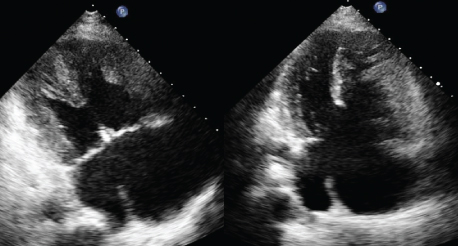
- A. Ventricular septal defect
- B. Atrial septal defect
- C. Partial Av canal
- D. Complete AV canal
- B. Atrial septal defect
- 451. A 45-year-old male with end-stage liver disease. A saline contrast injection was performed. The findings are suggestive of:
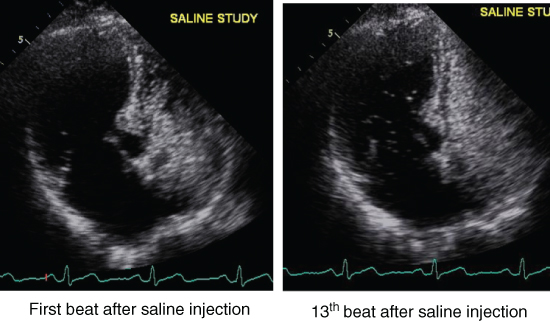
- A. Right-to-left shunt across a PFO
- B. Right-to-left shunt suggestive of transpulmonary shunt
- C. Left-to-right shunt
- D. Cannot be determined
- 452. What does the arrow show?
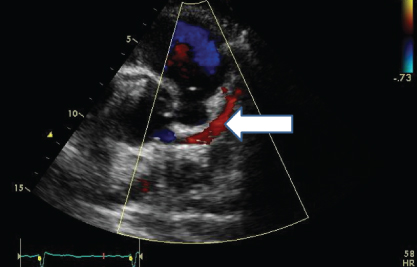
- A. Flow in the pulmonary artery
- B. Flow in the aorta
- C. Coronary blood flow
- D. Cannot determine

Stay updated, free articles. Join our Telegram channel
- A. Pleural effusion

Full access? Get Clinical Tree


